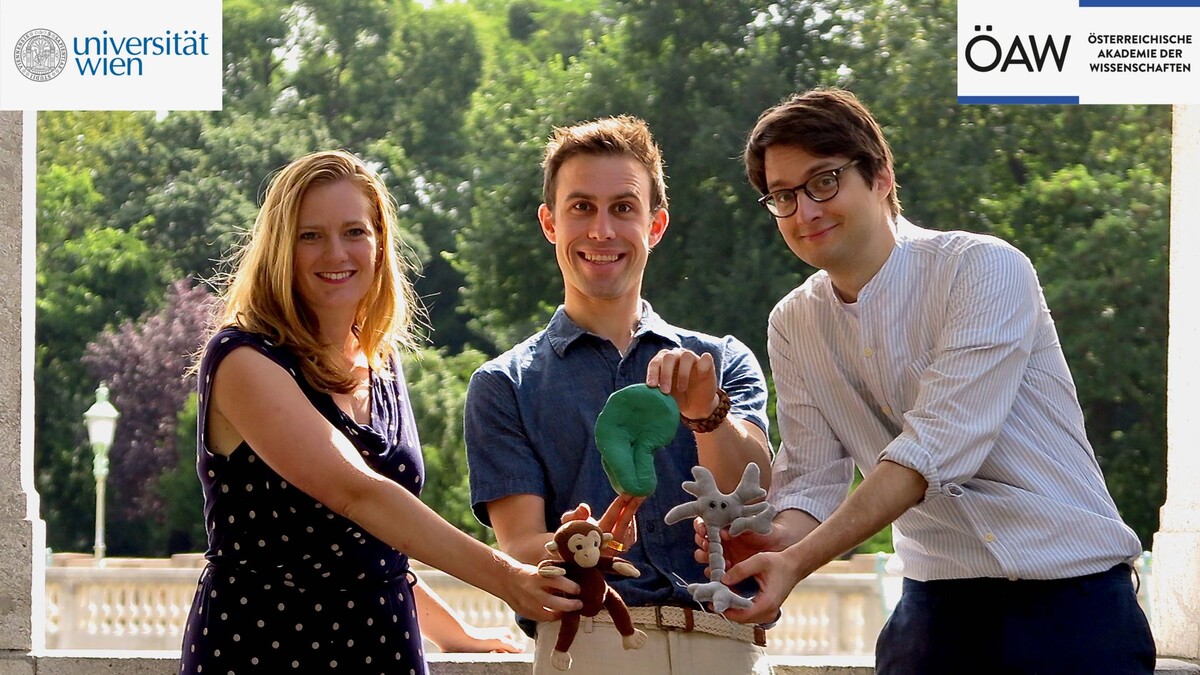YIRG Dynamates: Dynamic auditory predictions in human an non-human primates
Imagine yourself navigating through busy traffic, with cars, bikes and pedestrians moving around you in all directions. In this and many other situations, one of the crucial aspects for survival is accurately determining when and where external events are appearing, and whether and how things move. To allow both fast and accurate responses to external events, the brain continuously generates predictions about the future. For example, your brain predicts where a car will be by the time you want to cross the road. Yet, humans are not the only species for whom it is beneficial to predict the location and timing of sounds. Other primates might share these abilities, as they also need to navigate dense forest areas. To which degree recent evolutionary pressures have shaped human abilities in these contexts is unclear today.
Furthermore, ambiguities in the sensory environment, due to noise or uncertainty about the source properties, require the brain to generate several co-existing predictions and make decisions among them. To date, most of the existing knowledge about perceptual decision making comes from studying visual tasks. However, very little is known regarding this process in the auditory modality, which serves at least as important functions for survival and social behaviour.
The YIRG Dynamates aims to address those current key challenges in auditory cognition, by empirically testing and modelling the sensory prediction mechanisms in comparison across evolutionarily closely related species and in realistic but highly controllable virtual acoustic environments. Importantly, in humans, these mechanisms will also be investigated on a physiological level by means of high-density electroencephalography (EEG) allowing to examine whether the resulting model complies with biological restrictions on neural computation. Hence, this project rests on a strong collaboration between cognitive neuroscience, cognitive biology, and computational modelling. To this end, Dynamates comprises an interdisciplinary research team consisting of experts in the fields of computational neuroscience and psychoacoustics (Robert Baumgartner), human EEG and sensory processing (Ulrich Pomper), and comparative cognition between animal species (Michelle Spierings).
Dynamates will conduct the first systematic comparative study on dynamic auditory predictions in space and time by both human and non-human primates. The findings of this project will broaden our understanding of the underlying neural mechanisms in humans, which may help future efforts to improve treatments for individuals with impairments or pathological biases in decision making. Moreover, the resulting computational model may stimulate further research by testable predictions of decision making across species as well as in more complex economic and social contexts, and it may be directly applied to improve artificial intelligence and virtual reality systems.
In the following online lecture Robert Baumgartner explains the background to this line of research: ÖAW Science Bites: Gefahr - wie wir sie hören. (German only)
Project duration: 01.07.2020-30.06.2025
Supported by the Austrian Science Fund (FWF, project ZK66).
Preprints and preregistrations
- Bayram, B., Meijer, D., Barumerli, R., Spierings, M., Baumgartner, R., & Pomper, U. (2024). Bayesian Prior Uncertainty and Surprisal Elicit Distinct Neural Patterns During Sound Localization in Dynamic Environments (p. 2024.07.22.604566). bioRxiv. https://doi.org/10.1101/2024.07.22.604566
- Fleischmann, R., Meijer, D., Pomper, U., Spierings, M., & Baumgartner, R. (2024). Is the pupil-linked arousal system mediating adaptive perceptual belief updating in spatially and temporally dynamic environments? OSF. https://doi.org/10.17605/OSF.IO/Q42E6
- Meijer, D., Bayram, B., Barumerli, R., Dorok, F., Greif, T., Spierings, M., Pomper, U., & Baumgartner, R. (2022). Confirming pupil dilation as physiological marker of Bayesian inference in dynamic auditory localization. OSF. https://doi.org/10.17605/OSF.IO/9BTZE
Publications
- Lladó, P., Barumerli, R., Baumgartner, R., & Majdak, P. (2024). Predicting the effect of headphones on the time to localize a target in an auditory-guided visual search task. Frontiers in Virtual Reality, 5. https://doi.org/10.3389/frvir.2024.1359987
- Meijer, D., & Noppeney, U. (2023). Metacognition in the audiovisual McGurk illusion: Perceptual and causal confidence. Philosophical Transactions of the Royal Society B: Biological Sciences, 378(1886), 20220348. https://doi.org/10.1098/rstb.2022.0348
- Barumerli, R., Majdak, P., Geronazzo, M., Meijer, D., Avanzini, F., & Baumgartner, R. (2023). A Bayesian model for human directional localization of broadband static sound sources. Acta Acustica, 7, 12. https://doi.org/10.1051/aacus/2023006
- Ignatiadis, K., Barumerli, R., Tóth, B., & Baumgartner, R. (2022). Effects of individualized brain anatomies and EEG electrode positions on inferred activity of the primary auditory cortex. Frontiers in Neuroinformatics, 16. https://www.frontiersin.org/articles/10.3389/fninf.2022.970372
- Majdak, P., Hollomey, C., Baumgartner, R. (2022). AMT 1.x: a toolbox for reproducible research in auditory modeling. Acta Acustica, 6, 19. https://doi.org/10.1051/aacus/2022011
- Baumgartner, R. (2021). The balancing act of spatial hearing (Der Balanceakt des räumlichen Gehörs). Akustik Journal, DEGA, Berlin, 3, 31-36. (article)



